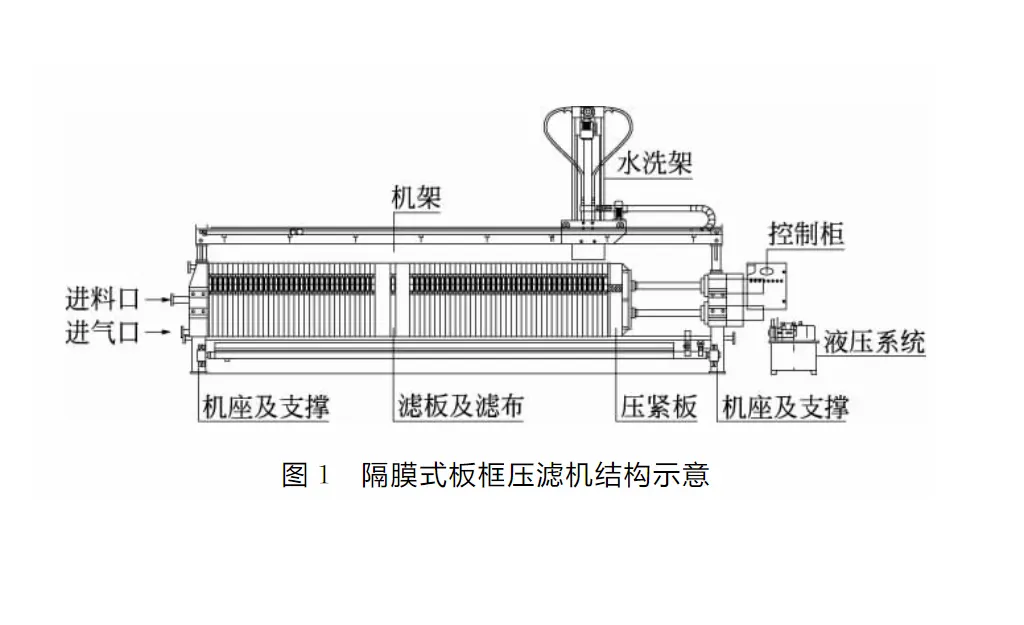Filter press is a solid-liquid separation equipment commonly used in industrial production, and filter press frequency boosting is a technical means to improve its working frequency. This article will introduce the role of filter press frequency increase in detail, to help you understand the advantages and effects of this technology in practical applications.
I. Overview of filter press uprating
Filter press frequency upgrading, as the name suggests, is to make the filter press process more materials per unit time by increasing its operating frequency. When the traditional filter press is working, each cycle needs to complete a series of operations such as feeding, pressing, washing, blow-drying, etc. These operations take a certain amount of time. And through the frequency upgrading technology, the time required for each operation step can be shortened, thus increasing the processing capacity of the filter press.
Second, the role of filter press frequency rise
1. Increased processing capacity: After the filter press is upgraded, the time of each working cycle is shortened, thus increasing the processing capacity of the equipment. This means that in the same unit of time, the filter press can process more materials, improving productivity.
2. Reduced energy consumption: As the processing capacity of the filter press is increased after the frequency is raised, the energy consumption per unit of material is also reduced. This is because the working efficiency of the equipment in the unit time is increased, the power and heat required and other energy consumption is also reduced.
3. Reduced equipment size: In some application scenarios, the size of the filter press needs to be reduced due to site constraints or cost considerations. With upscaling technology, the same or higher capacity can be achieved in a smaller space, thus reducing equipment size and weight.
4. Optimisation of the process: the uprating of the filter press reduces the residence time of the material in the equipment and helps to optimise the process. In some occasions where rapid separation is required, the frequency upgrading technology can better meet the production requirements.
5. Improvement of the level of automation: In order to realise the upscaling of filter presses, it is usually necessary to introduce an automation control system. Through automation technology, functions such as remote monitoring, data acquisition and fault diagnosis of the equipment can be realised, which improves the automation level and reliability of the equipment.
6. Reduce labour costs: the application of automation technology can also reduce labour costs. In the traditional operation of the filter press, it is necessary to manually complete the feeding, unloading and other cumbersome work, while the uplifted equipment can reduce manual intervention, reduce labour intensity and labour costs.
7. Improved separation: The separation of materials may be improved when the filter press is uprated. This is due to the shorter duration of each working cycle, which reduces the residence time of the material in the equipment and helps to improve the separation accuracy and purity.
8. Expanding the scope of application: frequency upgrading technology also allows the filter press to adapt to a wider range of materials to be processed. Some materials with special properties may require longer processing time to achieve the desired separation effect, while the frequency upgrading technology can shorten the processing time, so that the filter press can be better applied to a variety of material separation scenarios.
9. Increased equipment reliability: Frequent material entry and exit and rapid cycle times may cause greater wear and tear on the mechanical components of the equipment. This high frequency of operation does not mean a reduction in the life of the equipment, but may instead increase the reliability of the equipment by reducing the downtime of certain components. This is because the less downtime there is, the less time equipment components are exposed to potentially corrosive and damaging environments.
10. Reducing secondary contamination: In some applications, rapid handling of materials can reduce the risk of secondary contamination. For example, in the food and pharmaceutical industries, materials often need to be handled under strict hygienic conditions. With upscaling technology, operations such as filtration and washing can be carried out more quickly, thus reducing the risk of contamination while the material remains in the equipment.
11. Promote energy saving and emission reduction: with the growing awareness of environmental protection, energy saving and emission reduction have become increasingly important considerations in industrial production. After the upgrading of the filter press, due to the increase in processing capacity and the reduction of energy consumption, it helps to reduce energy consumption and waste emissions in the production process, which is in line with the development trend of green manufacturing.
12. Improvement of economic benefits: Through the application of filter press upgrading technology, enterprises can obtain economic benefits in many aspects. In addition to improving production efficiency and reducing energy consumption, it can also reduce the size of the equipment, reduce labour costs, optimize the process flow and so on, so as to achieve the overall economic benefits.
Third, how to achieve the filter press frequency?
Achieving filter press uprating requires comprehensive consideration of a number of aspects, including mechanical design, control systems, and material selection. The following are some key measures to achieve filter press uprating:
1. Optimised mechanical design: through the optimised design of the mechanical structure of the filter press, the friction and resistance of the moving parts can be reduced, and the transmission efficiency can be improved, so as to achieve high-speed operation of the equipment.
2. Adoption of high-performance materials: select high-temperature, wear-resistant and corrosion-resistant high-performance materials to make key components, so as to improve the durability and reliability of the equipment.
3. Introduction of a control system: the use of an advanced control system for precise control of the operation of the filter press, to achieve the rapid switching of the various work segments and work together.
4. Modular design: the components of the filter press are modularised for easy assembly, maintenance and upgrading of the equipment.
5. Enhance maintenance: regular maintenance of equipment to ensure that the components are in good working condition, prolonging the service life of the equipment.
6. Training of operators: professional training for operators to enable them to master the operating skills and maintenance methods of the equipment and to improve the operating efficiency and stability of the equipment.
7
 Plate and frame chamber diaphragm filter presses
Plate and frame chamber diaphragm filter presses






